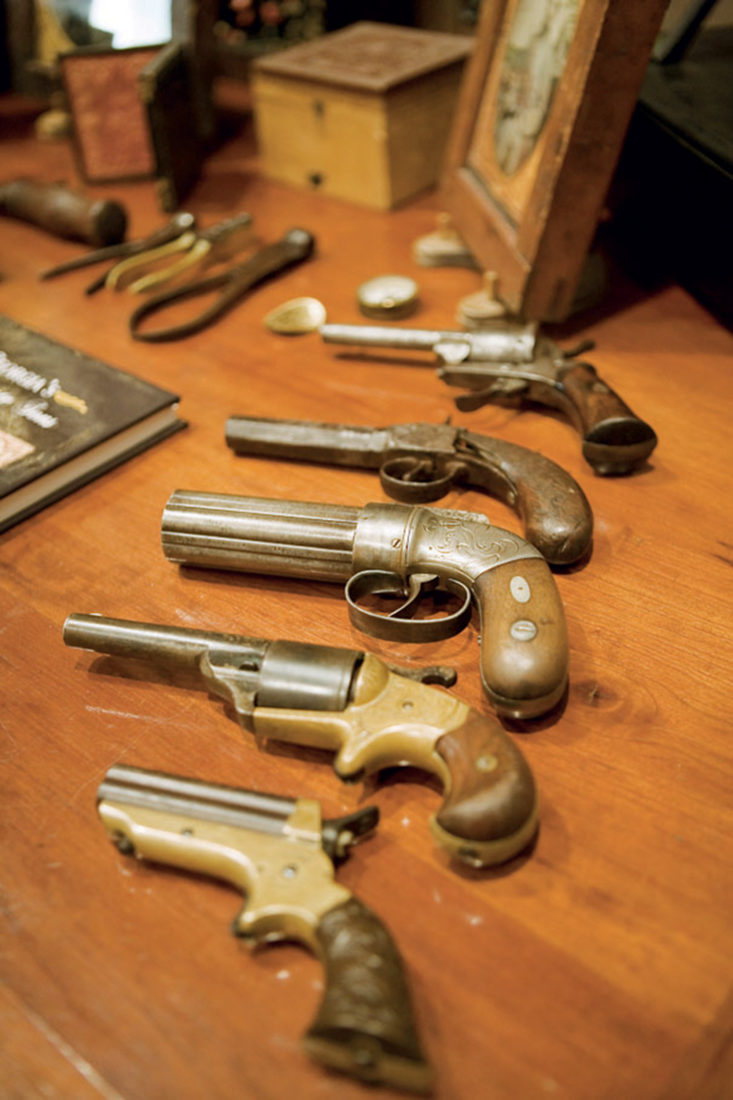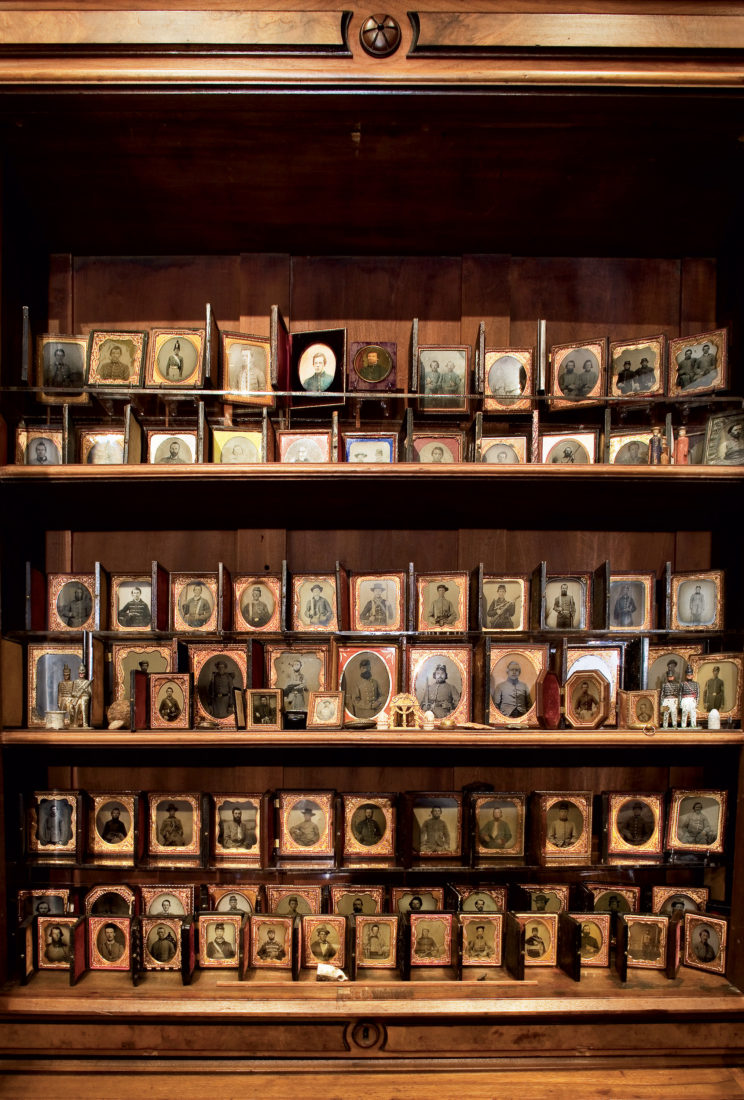The boy—just seventeen years old—stares into the camera, his eyes blank or perhaps a little sad, hands open on his legs. Sweat has matted the hairline along his temples. He wears a gray wool uniform, and the brass buttons down its front glint slightly gold. On the bill of his soldier’s cap, called a kepi, are written the letters “T. G. W.” They stand for Thomas G. Wood. And days after this photo was taken, he was dead. Tommie Wood, of Social Circle, Georgia, was drummer boy for Company H of the 11th Georgia Infantry in the Army of the Confederate States of America.
“This one is among my favorites,” says Atlanta collector David Vaughan of the Civil War portrait. “Mainly because I have a son of my own.” Vaughan pauses to read a scrap of Wood’s history, originally published in the Augusta Daily Constitutionalist, January 11, 1862. “Wood was the pet and idol of his regiment, but was struggling with pneumonia, that terrible scourge of the camp and the hospital. When asked whether he was afraid to die, he calmly answered: ‘No; I joined the church when but eight years of age; my father and mother are both in heaven and I would rather go and be with them there than to stay and suffer here.’”

Photo: Yvonne Boyd
Collector David Vaughan
It’s documents like this that keep Vaughan searching to improve his collection of Civil War portraits—particularly images taken of Georgia-based troops. “Originally, when I began collecting Southern historical and Civil War artifacts about twenty years ago, I was buying things. A gun. A sword. A knife. A couple of pistols. But I didn’t think I had anything interesting. It all felt cold. Then I went to a show and saw my first portrait image: a photograph of a Yankee, clad head to toe in his uniform and holding a Springfield rifle—and wearing a regulation kepi on his head. And while I didn’t buy that photo, it spoke to me. I thought: This is what I’m after.” Since then, Vaughan has scoured the big Civil War memorabilia shows and has made himself familiar to other period collectors. He has built a renowned collection of Civil War portraits that numbers in the hundreds.
“Every time I buy a new portrait, I’m off on a new tangent,” he says. “I research each one, so I get to learn and grow. I chase down their history, their letters, their thoughts. It’s enriching. And it’s surprising.”
And it’s a trip Vaughan is constantly ready to take. He considers a two-man portrait of the Hawkins brothers, from Oglethorpe, Georgia, who were attached to the 38th Georgia Infantry. The brother on the left—the lieutenant with bushy sideburns who is drawing his sword in the photo—was killed at the Battle of Winchester. The other brother, pulling his knife, survived the war. And then there is the tinted ambrotype of James M. Stedham, from Company F, 25th Alabama Infantry Regiment, Army of Tennessee. Decked out in a slouch hat and an eight-button tunic, he carries a rifle, a bowie knife, and a single-shot boot pistol. Captured at Resaca, Georgia, on May 15, 1864, he died of “acute dysentery” at a prison camp in Indiana the following year.

Photo: Yvonne Boyd
Civil War pistols
Another of Vaughan’s favorites is the portrait of the Patillo brothers: four Atlantans who joined Company K of the 22nd Georgia Volunteer Infantry. All four are shown holding their unsheathed bowie knives vertically; each knife’s D-shaped hand guard is shaped slightly differently from the others. “That’s because bowie knives were made by local blacksmiths, who fashioned their D-guards differently,” Vaughan says. “And look—John, the brother on the right, is also holding an Enfield rifle, while the brother on the left is holding a Confederate hand grenade. It’s the only photo of a Confederate hand grenade I know of.”
Three of the four Patillo brothers survived the war and returned home to have large families. “Those families are now spread out all over North Georgia,” Vaughan says. “And when this photo was published in the Atlanta Journal-Constitution a week before the opening of a museum exhibit devoted to the collection, I got a dozen phone calls from Patillo family members. With each of those calls, I thought: You see, these images aren’t just history. These men, in their own way, are all still very much alive.”

Photo: Yvonne Boyd
Drummer boy Tommie Wood








